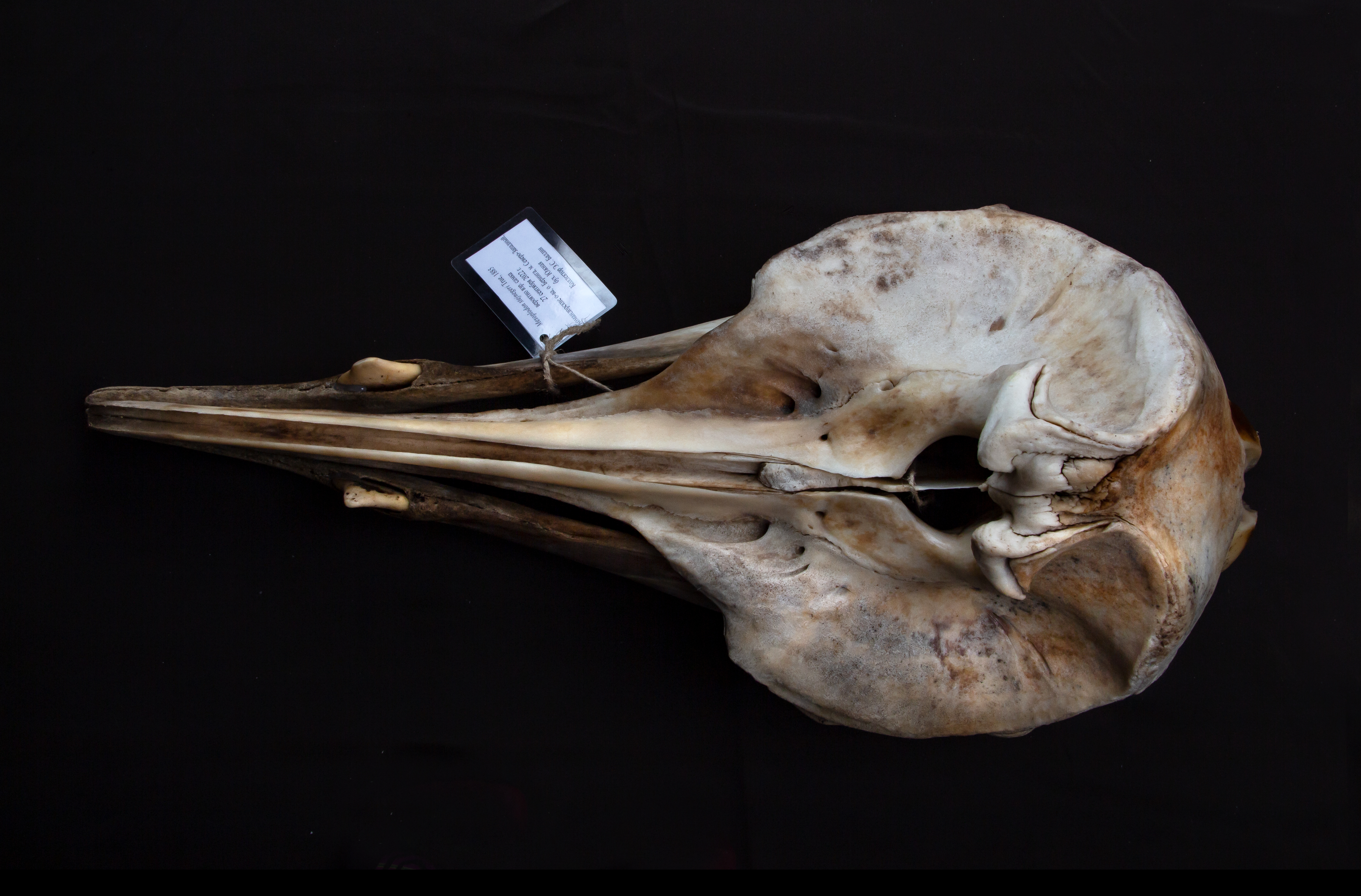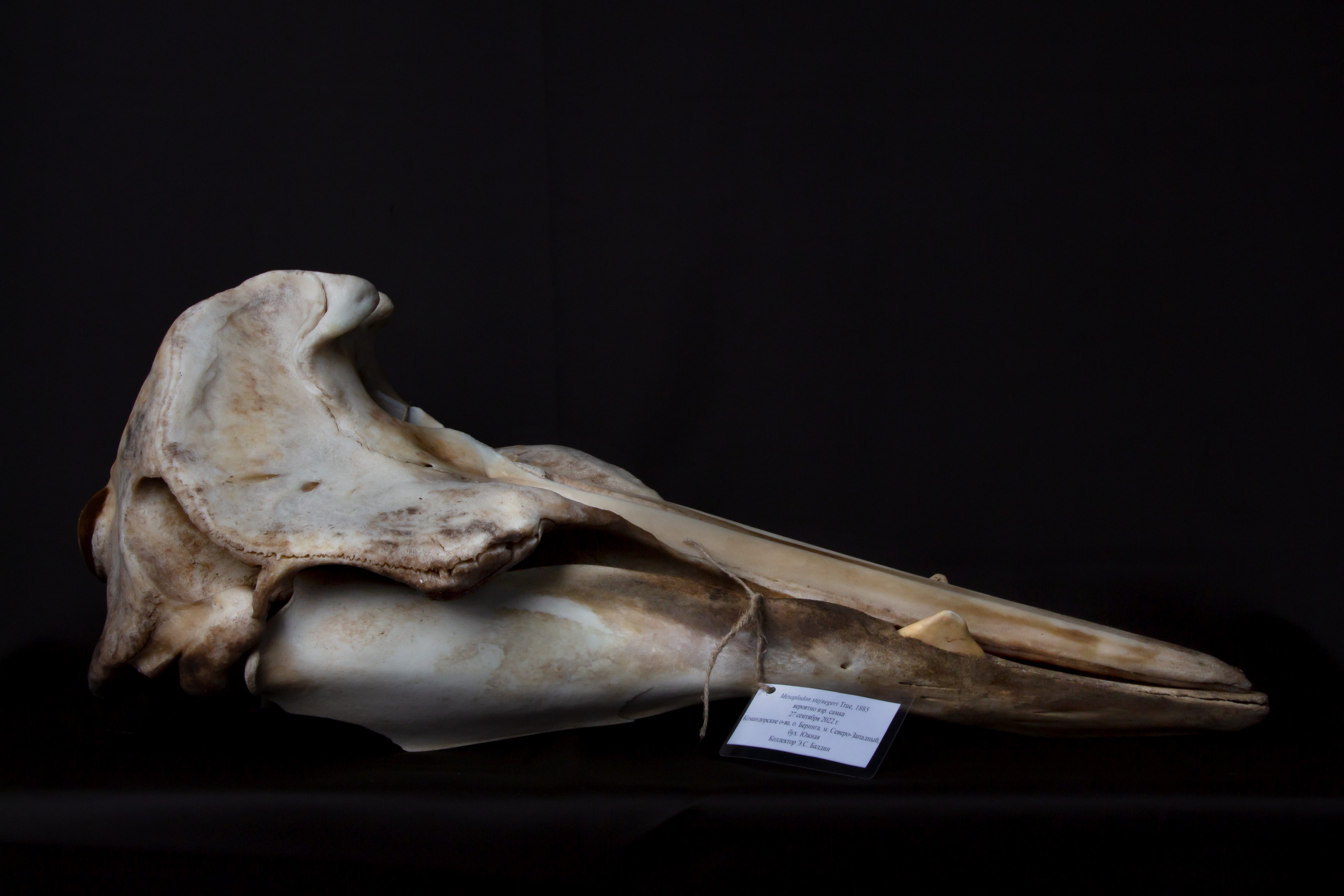During patrol, Edward Baldin, Ranger of the national park, found an intact skull and some skeleton fragments of an amazing and extremely rare marine mammal - Steineger's beaked whale (Mesoplodon stejnegeri). The park staff hurried to the site to collect the remains of the skeleton and to take samples. The remains of Steineger's beaked whale were found near Severo-Zapadnoye Marine Mammal Rookery. Judging by the size of the skull and the condition of the teeth, it was an adult female.
It is the sixth skeleton of Steineger's beaked whale to have been found on the Commander Islands and in whole Russia, as the islands are the only part of the country where the animal bones were found. The last time we found Steineger's beaked whale was in 2003.

Edward Sergeyevich Baldin, Nikolskoye Village local, works as a ranger for many years and has fenomenal observation skills. It is not his first finding as he, for example, had a chance to discover parts of Steller sea cow several years ago. Photo by Anastasia Kuznetsova
The areal of Steineger's beaked whale includes the North Pacific Ocean from the coast of Japan through the Kuril Islands, Kamchatka, the Commandor-Aleutian Island Arc right to the coast of California. Most of Steineger's beaked whales are found on the coast of Japan, the Aleutian Islands and Alaska. For example, in the first decade of the XXI century, over 120 animals were found on the coast of Japan. In the last 20 years, there were over 70 findings on the Aleutians and Alaska.

Steineger's beaked whale's skull. Top view. Photo by Anastasia Rvantsova
Only several observations of live animals can be more or less trusted. This species, like most other representatives of beaked whales (16 species in Mesoplodon genus) leads a secretive lifestyle. It has a relatively small size of 5-6 m, so it is extremely difficult to notice them in nature. They live above continental slope and prefer to hunt squid. Apparently, they are migratory animals and spend a part of the year in northern waters near the Commander and Aleutian Islands, and Alaska. For the other part of the year, they migrate to subtropical waters on the latitude of Japan. Ecology and lifestyle of the species are nearly unknown.

Evgeny Georgievich Mamaev, Deputy Director for Science of the national park collects samples at Severo-Zapadnoye Rookery. Photo by Edward Baldin
The species was first described by American taxonomist Frederick W. True in 1885 based on the skull found on Bering Island by the Governor of the Commander Islands, Nikolai Grebnitsky. It later was given to American naturalist Leonhard Stejneger, who at that time was conducting his research on the Commander Islands. F. True gave the new species the name of L. Steineger – Mesoplodon stejnegeri in honor of his "esteemed friend and outstanding naturalist". The generic name Mesoplodon is of Greek origin and is translated as armed with a tooth located in the middle of the jaw.
Steineger's beaked whale is listed in the Red Book of Russia and Kamchatka. The find is extremely exciting. The skull will be stored in the osteological collection of the national park and will be part of the museum exposition in the visitor center in Nikolskoye Village on Bering Island.










